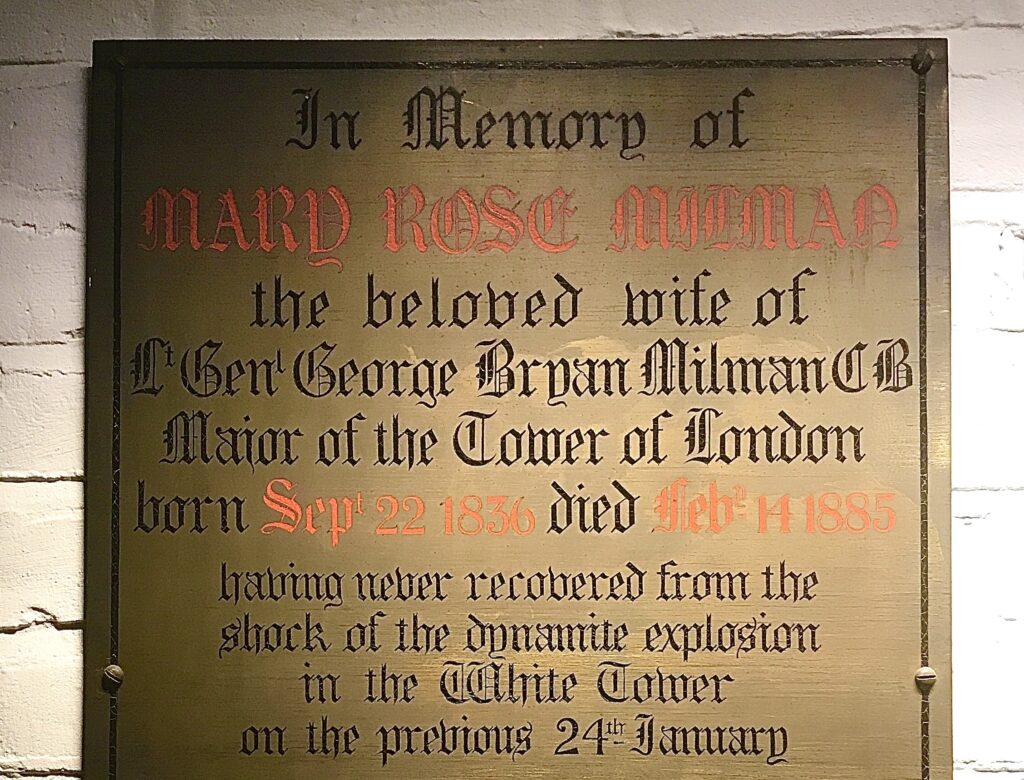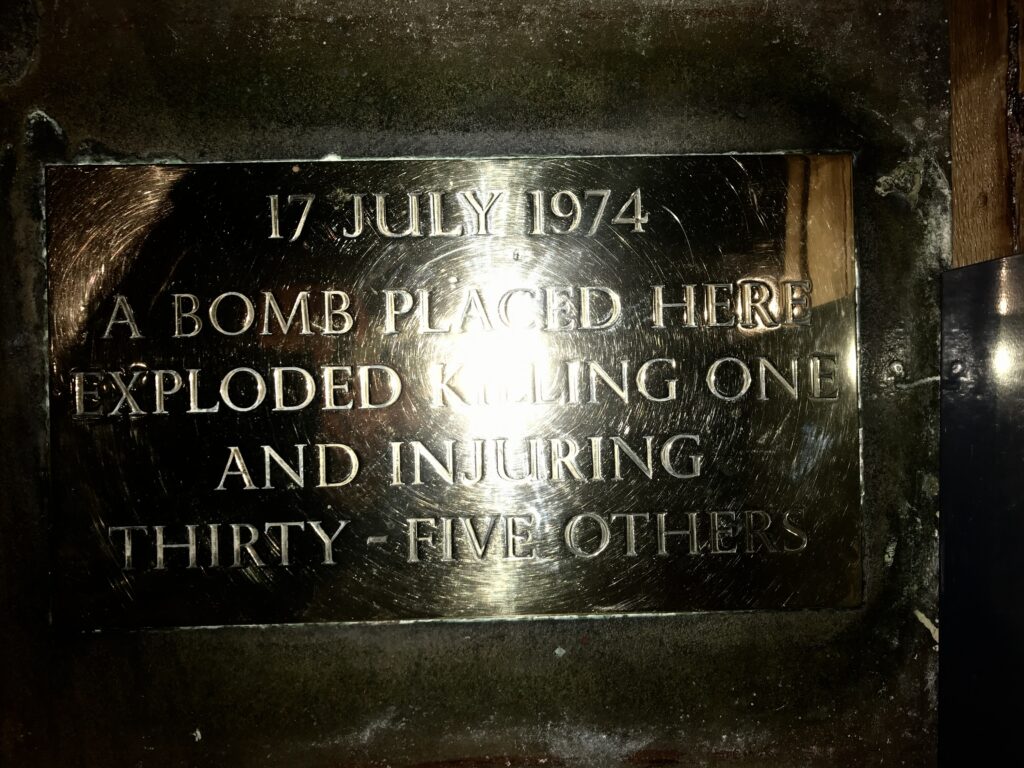
A couple of months ago I got to look in the crypt of St Peter ad Vincula (“St Peter in chains”) the Chapel Royal within the Tower of London. Within this space is the shrine of Thomas More (canonised by Pope Pius XI in 1935), but it was a plaque on the wall that caught my eye.
This commemorates Mary Rose Milman “the beloved wife” of Lt. General George Milman who was the Tower’s ‘Major’ (now known as the ‘Resident Governor’, basically the person responsible for the day to day running of the castle) who died on 14 February 1885, “having never recovered from the shock of the dynamite explosion in the White Tower on the previous 24 January”.
This explosion was towards the end of a long bombing campaign by ‘Fenians’ – Irish nationalists – that had also seen attacks on military barracks, ships, stations and even the House of Commons. Over 80 people were injured in the bombings and a young boy killed. Life sentences were handed down to captured bombers and ringleaders.

Leap forward nearly 90 years to July 1974 and another Irish nationalist bomb explodes in the White Tower, injuring over 40 people, including a dozen children, and killing a 48 year old school librarian from Lewisham called Dorothy Household, who had been visiting the Tower with a friend and two children.
Although no one claimed responsibility for the bombing, it came during a sustained period of attacks on the mainland carried out by the Provisional IRA. In another parallel with the 1880s, this campaign also included a bomb left in Parliament.
You need to look closely in the basement of the White Tower, but on the floor under the mortars and cannons is a brass plaque that marks the spot where the bomb exploded.

